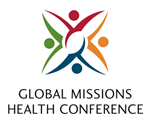- GMHC
-
Getting Started
-
Wondering where to start?
-
 We're your guide. What can this community do for you? Learn more
We're your guide. What can this community do for you? Learn more
-
-
Mobilization
-
Heed the call!
-
 Community Challenges Activate your journey to the field! Read Article
Community Challenges Activate your journey to the field! Read Article -
 Search Jobs Community Job Board Read Article
Search Jobs Community Job Board Read Article
-
-
Resources
-
Learn & Connect
-
 Upcoming Events Learn from the experts in healthcare missions & connect with others. Register Now
Upcoming Events Learn from the experts in healthcare missions & connect with others. Register Now
-
-
Community
-
Connect With the Community
-
 Member Lounge We're all in this together! Join the conversation.
Member Lounge We're all in this together! Join the conversation.
-
- Store
- Log In

GMHC 2013
MalnutritionMalnutrition
In this session, we will cover the interaction of factors affecting nutritional status and the principles for treating severe acute malnutrition. We will also address
important vitamin and mineral deficiencies in developing countries.
important vitamin and mineral deficiencies in developing countries.
Community tags
This content has 0 tags that match your profile.
Healthcare Specialties Show all (32)
Global Health Interest Areas
Related Content





Comments
Jennifer Zornes
Tom Thacher